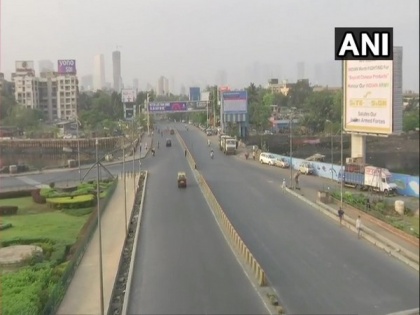Second Covid wave may derail India's budding recovery: S&P
By ANI | Published: May 5, 2021 01:34 PM2021-05-05T13:34:45+5:302021-05-05T13:45:02+5:30
India's second Covid wave may derail a strong recovery in the economy and credit conditions, S&P Global Ratings said on Wednesday.

Second Covid wave may derail India's budding recovery: S&P
India's second Covid wave may derail a strong recovery in the economy and credit conditions, S&P Global Ratings said on Wednesday.
The country's rate of daily new infections keeps spiralling upward, accounting for almost half of the world's cases, overwhelming the Indian health system.
S&P Global Ratings said the possibility the government will impose more local lockdowns may thwart what was looking like a robust rebound in corporate profits, liquidity, funding access, government revenues and banking system profitability.
"The Indian recovery had been so vigorous across many measures, particularly in the last quarter of fiscal 2021, and yet the latest outbreak has escalated rapidly," said S&P Global Ratings credit analyst Eunice Tan.
"Despite being the largest vaccine manufacturer in the world, India's vaccination rollout to the country's very large and largely rural population has proven challenging."
The central government has avoided rolling out another nationwide lockdown, given this would be unpopular and economically costly. However, authorities have already imposed local lockdowns that cover much of the country, including Mumbai, New Delhi, and Bengaluru.
The scope of lockdowns affects mobility and is indicative of the strength of India's recovery.
S&P looked at two scenarios at how this might play out across sectors. The severe scenario holds that new infections peak in late June. The second, moderate scenario posits that infections peak in May.
"India's second wave has prompted us to reconsider our forecast of 11 per cent GDP growth this fiscal year. The timing of the peak in cases, and subsequent rate of decline, drive our considerations," said S&P Global Ratings Asia-Pacific chief economist Shaun Roache.
The scenario projections assume that initial shocks to private consumption and investment filter through to the rest of economy. For example, lower consumption will mean less hiring, lower wages and a second hit to consumption.
S&P's moderate scenario suggests a hit to GDP of about 1.2 percentage points. This means full-year growth of 9.8 per cent for fiscal 2022 (the year ending March 31, 2022). This compares with a baseline forecast of 11 per cent growth for the period set in March 2021.
In the severe scenario, the hit is 2.8 percentage points with growth of 8.2 per cent.
The depth of the Indian economy's deceleration will determine the hit on its sovereign credit profile, said S&P. The government's fiscal position is already stretched. The general government deficit was about 14 per cent of GDP in fiscal 2021 with net debt stock of just over 90 per cent of GDP.
Rated Indian companies are going into this second Covid wave with much improved operating and liquidity conditions than they did going into the first wave last year. As such, S&P expects the credit profile of corporate entities to be resilient to second Covid wave.
The second wave may challenge an otherwise strong recovery for infrastructure. The severe scenario, which assumes hits to economic growth and infrastructure sector cash flows, presents more downside risks.
Domestic banks continue to face high levels of systemic risk. In the moderate downside scenario, the banking system's weak loans should remain elevated at 11 to 12 per cent of gross loans.
Credit losses will remain high in fiscal 2022 at 2.2 per cent of total loans before recovering to 1.8 per cent in fiscal 2023, said S&P.
( With inputs from ANI )
Disclaimer: This post has been auto-published from an agency feed without any modifications to the text and has not been reviewed by an editor
Open in app